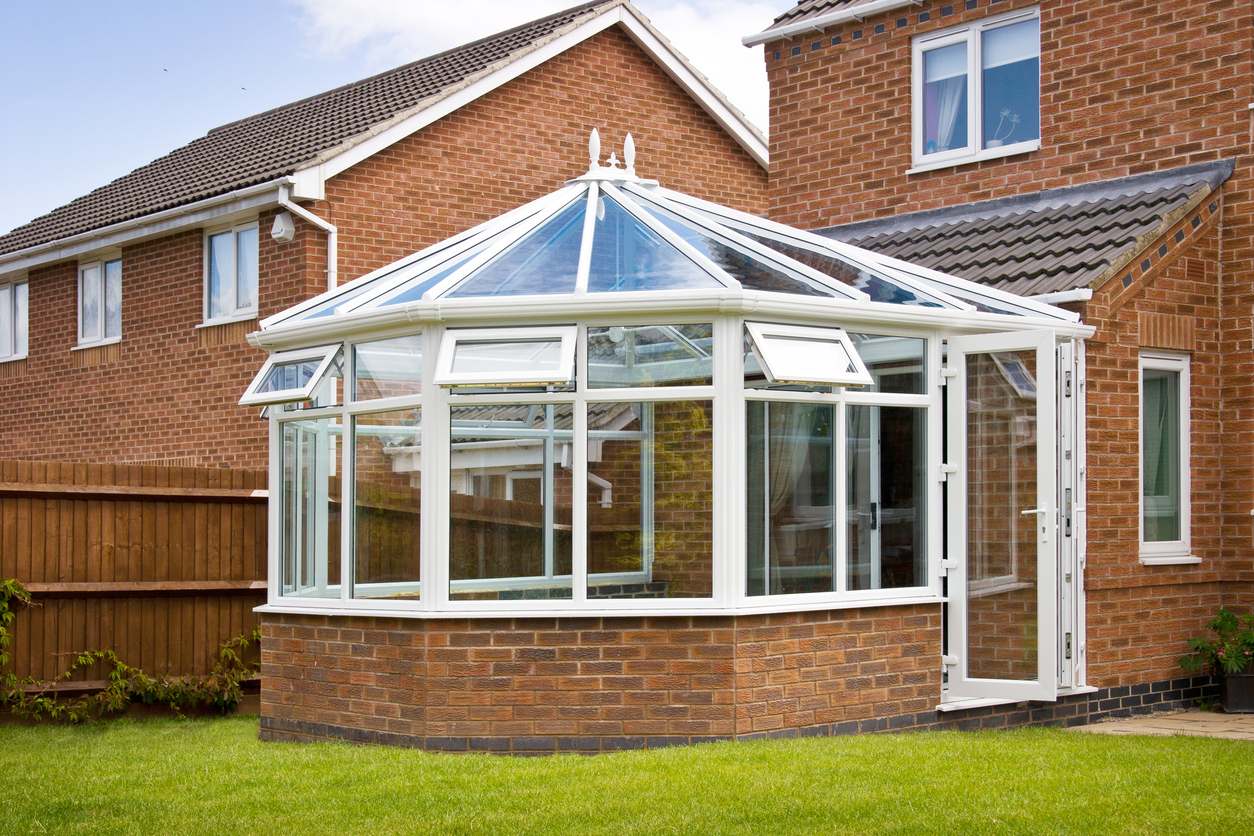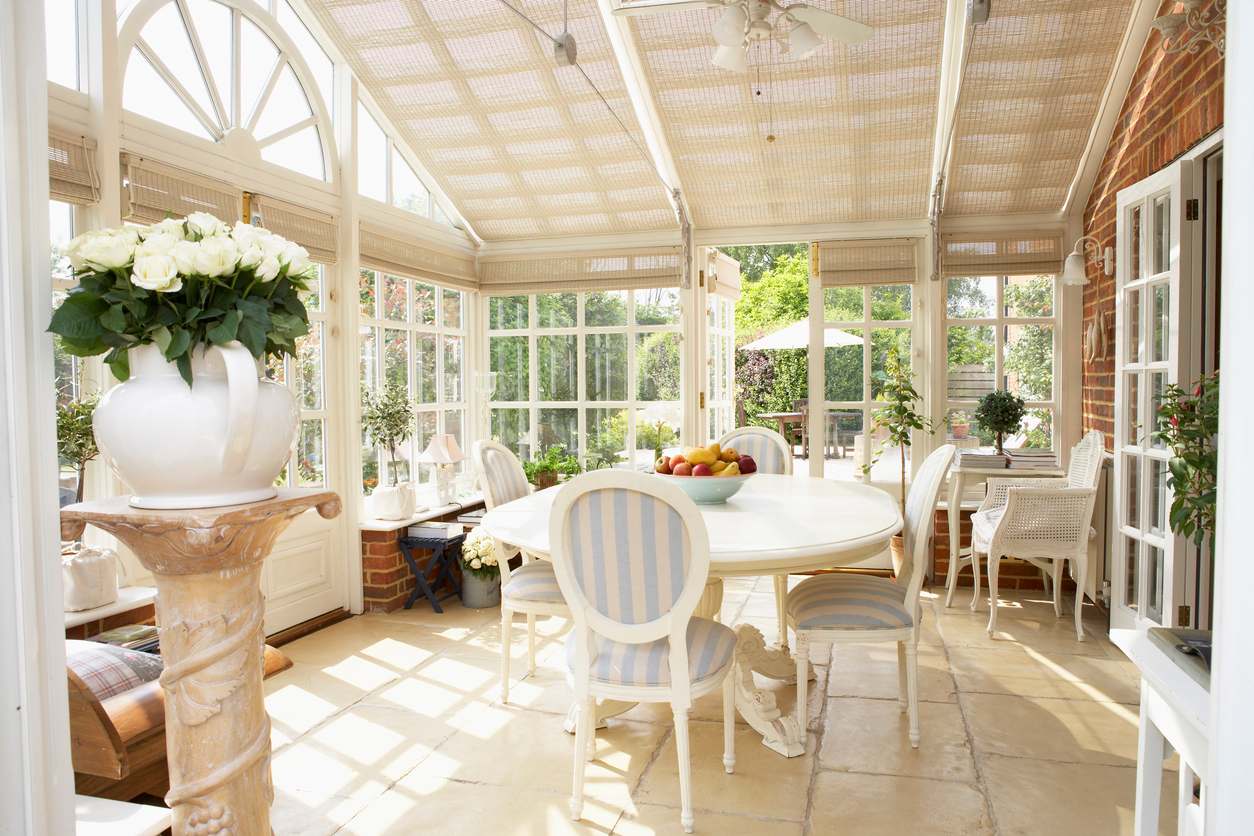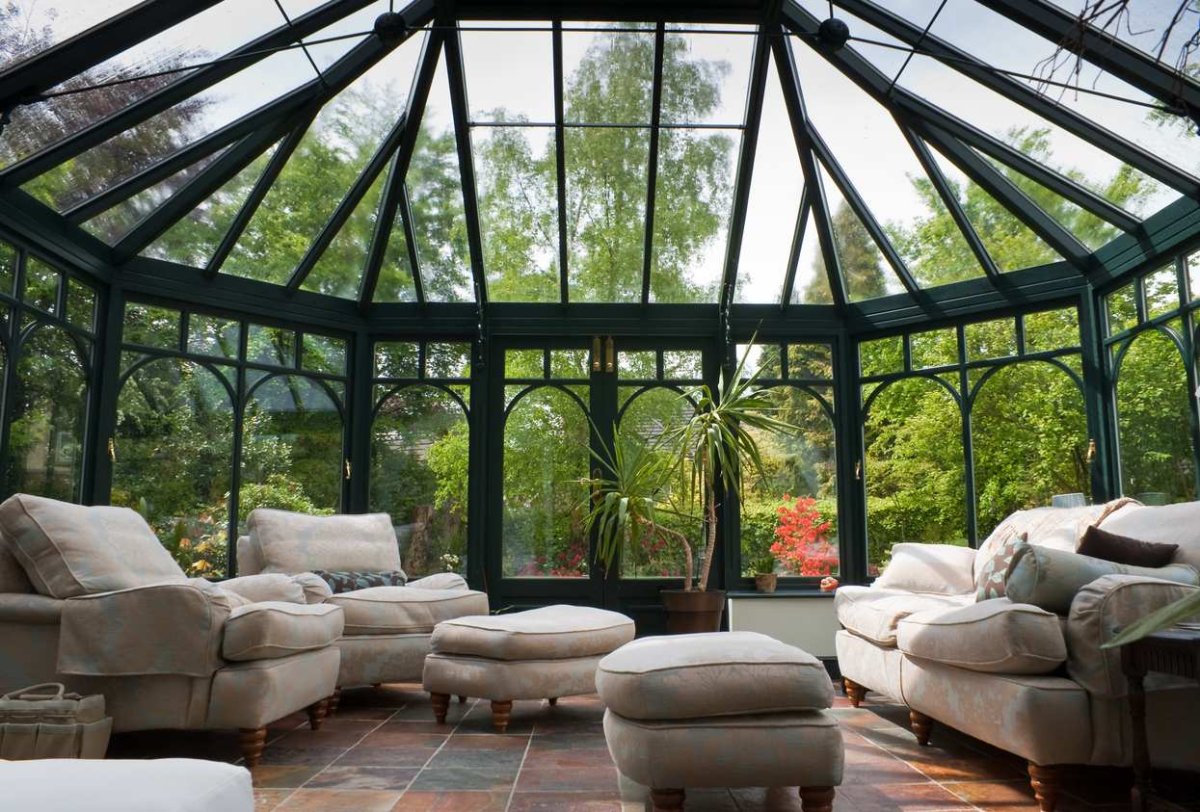We may earn revenue from the products available on this page and participate in affiliate programs. Learn More ›
Natural light is coveted indoors, especially as it filters through the windows on a cool spring or fall day and warms your home. With wall to wall windows, sunrooms maximize the possible natural light. These home additions emulate the feeling of being in the great outdoors—but without mosquitoes hovering around and without strong winds blowing your newspaper out of your hands. Even on a sunny winter day, a sunroom can be a warm and inviting spot where you can enjoy watching cardinals at your bird feeder against a snowy backdrop. Keep reading to find out why these glass additions are so popular and the notable downsides before you set out to install your own.
RELATED: 14 Spaces That Blur the Line Between Indoors and Out
It’s all about the seasons.
Not all sunrooms provide the same benefits. Many are intended to be used for just three months out of the year—spring, summer and fall—while others are designed for year-round use. Three-season sunrooms look a lot like four-season sunrooms, but they come with some notable differences.

- The three-season sunroom is designed as a distinct room from rest of the house, physically separated by sliding patio doors or French doors. They feature floor-to-ceiling windows on two or three sides of the addition so the homeowners can enjoy as much natural light as possible. The biggest distinguishing factor, though, is that three-season sunrooms are not climate-controlled. Without heating or air conditioning equipment, they’re fairly affordable to build, averaging $15,000 to $50,000, depending on size, quality, and the going construction rate in a given area. This type of sunroom may or may not have a concrete foundation (some are constructed over an existing patio or deck) and that, too, will affect the cost. Three-season sunrooms may be built on-site but they are frequently purchased as kits and installed by a contractor.
- Four-season sunrooms are heated and cooled so they can be used on any day of the year. They are designed to be an extension of the home’s living space and are not separated by doors. The windows usually do not run all the way to the floor, since wiring and HVAC ducts are often installed in a knee wall that resembles wainscoting below the windows. Four-season sunrooms are constructed in compliance with local building codes, and the material used in construction are often of higher quality than those used in three-season sunrooms. For example, the windows in a four-season sunroom may be designed to reduce thermal transfer (so the room doesn’t get too hot) and may feature multiple panes filled with argon gas. Expect to pay $35,000 to $100,00 or more for a four-season sunroom, depending on size and local construction costs.

Sunrooms present both benefits and challenges.
Adding a sunroom will change your property description as well as the value of your home, so it’s a good idea to consider the benefits and potential drawbacks before building one.
PROS:
- Additional living space.
- Increased home value. In 2013, Remodeling Magazine determined that a sunroom addition costing $73,000 would provide an additional $34,000 to the value of the home.
- Versatility. Sunrooms can be used for a wide variety of purposes, such as an extended family room, a home office, a dining room, a home gym, or even a plant nursery. No hard and fast rules exist when it comes to how the extra space is used.
CONS:
- Increased property taxes. Along with increased home value often comes an increase in property taxes. You could pay anywhere from a few hundred to a few thousand dollars more in annual property taxes, depending on the tax rate in your community.
- Higher utility bills. Homeowners who build a four-season sunroom should expect to see an increase in their utility bills for heating and cooling the additional living space.
- Privacy concerns. Unless you install shades or curtains, passersby will be able to see inside the sunroom, especially when it’s dark outside.
- Potential discomfort during summer. Three-season sunrooms can get pretty toasty during hot summers. A quality ceiling fan and removable glass panels can help circulate the air.

Sunrooms present unique decorating challenges.
Wall-to-wall windows don’t leave a lot of room to hang artwork or even arrange furniture as you would in a standard family room. But don’t let that stop you from adding your own personal touch! Follow these tips to decorate a sunroom.
- Add curtains or shades. Not only do they block direct sunlight on hot summer days, blinds and shades offer a modicum of privacy. Sunrooms are meant to be bright and airy, so opt for sheer fabrics and natural materials when choosing shades or curtains. Lightweight and light-colored curtain panels can be installed on rods above the windows and pulled back during the day. Bamboo blinds are another good option for installing over individual windows, and they can be raised during the day and lowered in the evening.
- Soften a concrete floor with rugs and overstuffed furniture. The floor in a three-season sunroom built over a concrete patio can feel hard and cold. Add softness with one or more area rugs and a plush chair or loveseat. While bare wicker furniture may be a staple on porches, it won’t do much for softening up a concrete floor, and it can make the sunroom look outdated.
- Keep it light—furnishings, that is. Dark trim or furniture colors detract from the sunny look and feel of a sunroom, while whites, beiges and pastel hues will play to its airiness. Don’t be afraid to add a splash of color here or there in the form accessories, like furniture pillows or flower vases.
- Incorporate a fireplace. Three-season sunrooms and fireplaces go hand in hand, as this heat source adds ambience and comfort on cooler days and evenings.
- Don’t skimp on foliage. Pots of lush green foliage and blooming plants will give the sunroom a spa-like feel. Blooming plants that vine, such as bougainvillea or mandevilla, can be trained to climb an indoor trellis, adding a tropical feel to the room with their brilliant blossoms.
Locate a sunroom where it will suit your lifestyle.
A sunroom that’s located on the east side of the home will allow homeowners to take full advantage of being able to eat breakfast while watching the sunrise, while a sunroom on the north side of the home will provide filtered light throughout the day but will escape the problem of harsh direct sunlight. While the typical sunroom is located on the sides or the back of the house, it’s not unheard of to add a sunroom to the front of the home. If locating the expansion at the front of the house, homeowners may be more conscientious of designing to match the style of the home in order to enhance (and not detract from) the property’s curb appeal.

